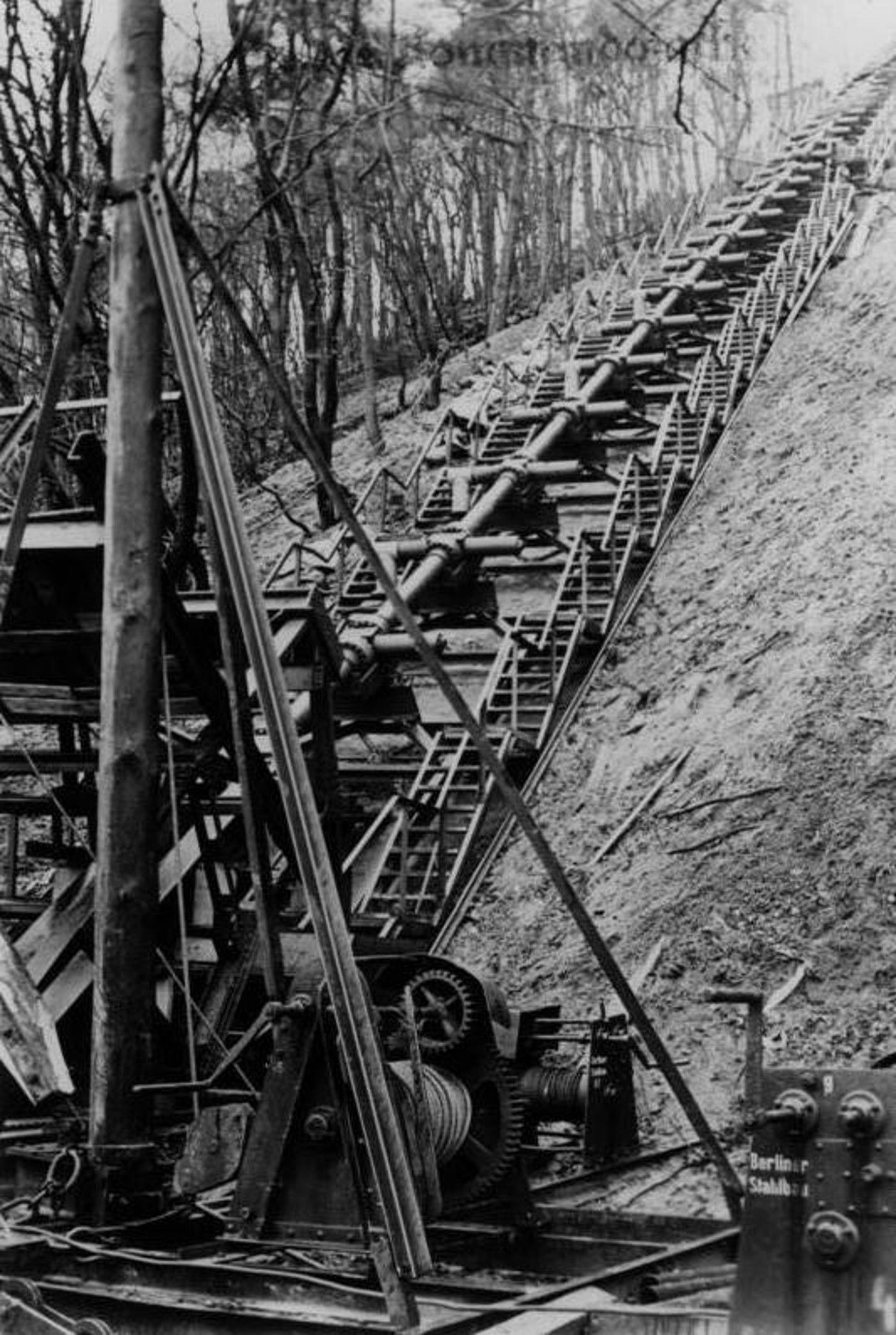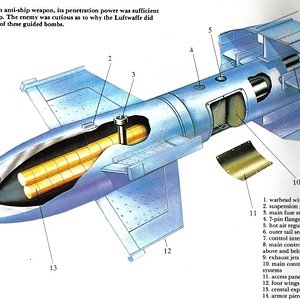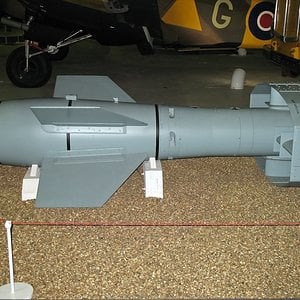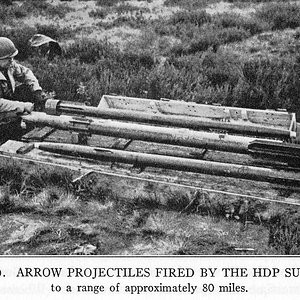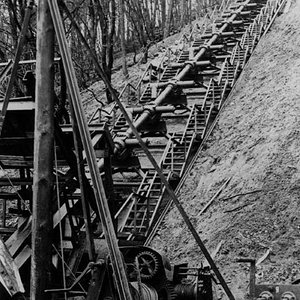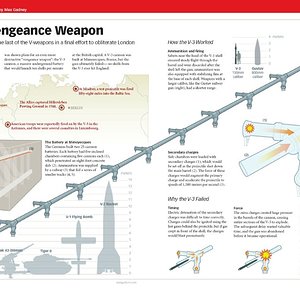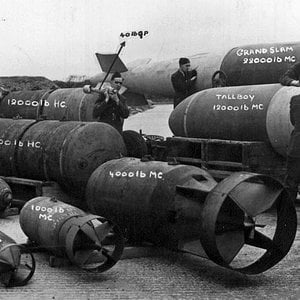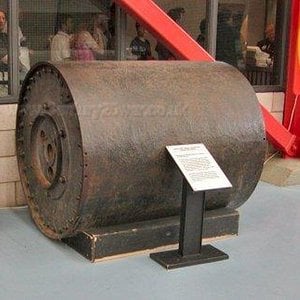Navigation
Install the app
How to install the app on iOS
Follow along with the video below to see how to install our site as a web app on your home screen.
Note: This feature may not be available in some browsers.
More options
You are using an out of date browser. It may not display this or other websites correctly.
You should upgrade or use an alternative browser.
You should upgrade or use an alternative browser.
In 1943, German engineer August Cönders, of Röchling Stahlwerk AG, proposed an electrically initiated multiple-charge weapon. Thanks to the success of Cönders's other projects, including the "Röchling shell", major figures in the Nazi establishment took notice of him, most importantly Albert Speer, the Minister of Munitions.
Cönders was ordered to produce a prototype of the Hochdruckpumpe and duly constructed one in 20 mm calibre, which proved satisfactory. At this point, Adolf Hitler, who had been following the project with interest, took a hand and decided that a battery of 50 full-size guns would be sited in northern France for bombarding London.
Cönders had constructed a full-calibre gun at the Hillersleben proving ground near Magdeburg, but by the end of 1943 he had encountered severe problems both in putting the gun's basic principle into operation and in producing a feasible design for the shells it was to fire. Even when everything worked, the muzzle velocity was just over 1,000 metres per second (3,300 ft/s), which was nowhere near what had been promised. Nonetheless, plans were proposed to build a single full-size gun with a 150 metres (490 ft) barrel at Misdroy on the Baltic island of Wolin, near Peenemünde, while construction at the Mimoyecques site in France (which had already been attacked by the USAAF and the RAF) went ahead. By March 1944, with no good news from Misdroy, the Heereswaffenamt (Weapon Procurement Office) took control of the project, and Cönders became one of the engineers working on the three chief problems: projectile design, obturation, and ignition of the secondary charges.
Six different companies, including Krupp and Skoda, produced satisfactory designs for projectiles. Obturation problems were solved by placing a sealing piston between the projectile and the initial propellant charge, which in turn prevented the flash from the charge from getting ahead of the projectile and solved the problem of controlling the initiation of the secondary charges. By the end of May 1944, there were four designs for the 150-mm finned projectile, one manufactured by Fasterstoff (designed by Füstenberg), and three others by Röchling (Cönders), Bochumer (Verein-Haack), and Witkowitz (Athem).
Trials were held at Misdroy from May 20–24, 1944 with ranges of up to 88 km being attained. On July 4, 1944, the Misdroy gun was test-fired with 8 rounds (one of the 1.8 meter long shells travelled 93 km). The gun burst during the testing, putting an end to the tests
Cönders was ordered to produce a prototype of the Hochdruckpumpe and duly constructed one in 20 mm calibre, which proved satisfactory. At this point, Adolf Hitler, who had been following the project with interest, took a hand and decided that a battery of 50 full-size guns would be sited in northern France for bombarding London.
Cönders had constructed a full-calibre gun at the Hillersleben proving ground near Magdeburg, but by the end of 1943 he had encountered severe problems both in putting the gun's basic principle into operation and in producing a feasible design for the shells it was to fire. Even when everything worked, the muzzle velocity was just over 1,000 metres per second (3,300 ft/s), which was nowhere near what had been promised. Nonetheless, plans were proposed to build a single full-size gun with a 150 metres (490 ft) barrel at Misdroy on the Baltic island of Wolin, near Peenemünde, while construction at the Mimoyecques site in France (which had already been attacked by the USAAF and the RAF) went ahead. By March 1944, with no good news from Misdroy, the Heereswaffenamt (Weapon Procurement Office) took control of the project, and Cönders became one of the engineers working on the three chief problems: projectile design, obturation, and ignition of the secondary charges.
Six different companies, including Krupp and Skoda, produced satisfactory designs for projectiles. Obturation problems were solved by placing a sealing piston between the projectile and the initial propellant charge, which in turn prevented the flash from the charge from getting ahead of the projectile and solved the problem of controlling the initiation of the secondary charges. By the end of May 1944, there were four designs for the 150-mm finned projectile, one manufactured by Fasterstoff (designed by Füstenberg), and three others by Röchling (Cönders), Bochumer (Verein-Haack), and Witkowitz (Athem).
Trials were held at Misdroy from May 20–24, 1944 with ranges of up to 88 km being attained. On July 4, 1944, the Misdroy gun was test-fired with 8 rounds (one of the 1.8 meter long shells travelled 93 km). The gun burst during the testing, putting an end to the tests

